The spectacular vistas and stunning National Parks of Utah are well-known worldwide.
If you’ve never visited Utah before, seeing Bryce Canyon and Zion National Park may seem like you’ve landed on another world.
Nature reserves like this are ideal places for animals to flourish without worrying about losing their home to people.
In this article, we’ll take a look at the Types of Owl species that might be seen in Utah.
| Image | Name |
|---|---|
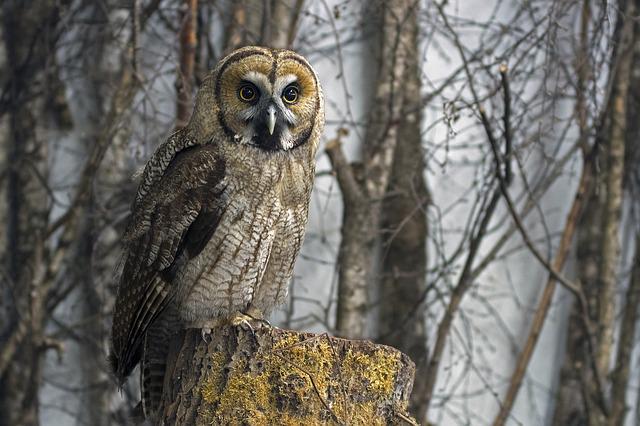 | Great Gray Owl |
 | Barn Owl |
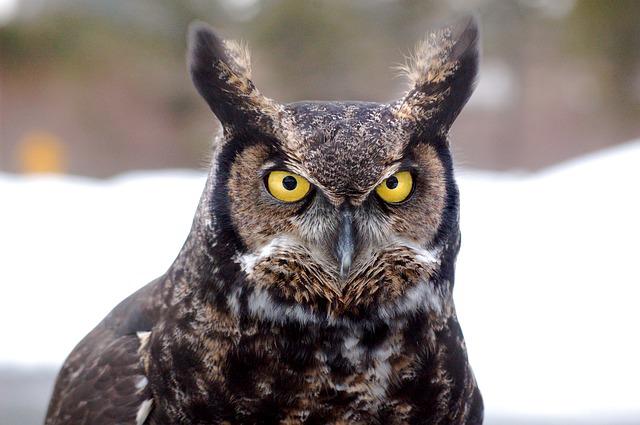 | Great Horned Owl |
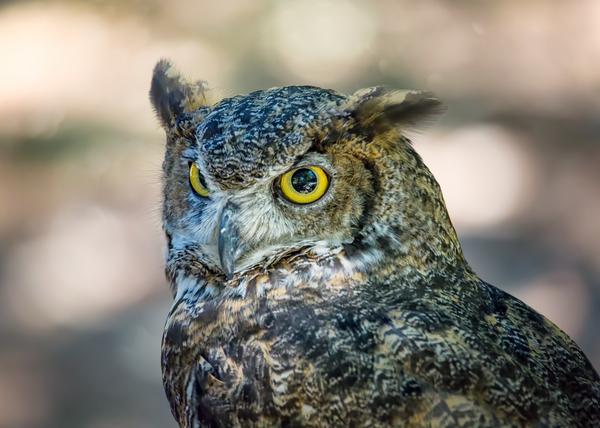 | Northern Pygmy-Owl |
 | Short-Eared Owl |
 | Snowy Owl |
 | Long-Eared Owl |
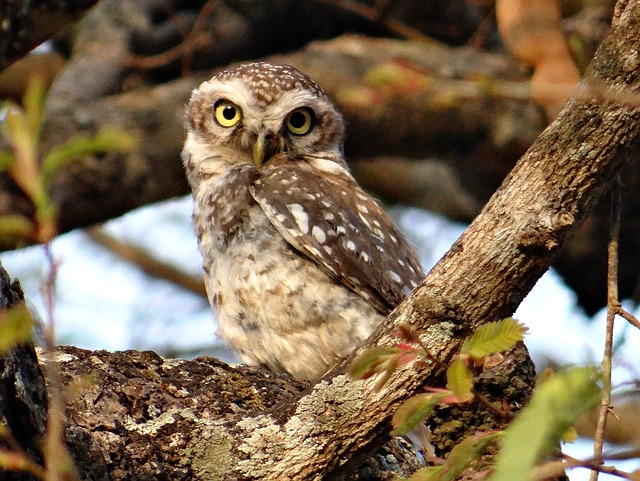 | Spotted Owl |
 | Burrowing Owl |
 | Western Screech-Owl |
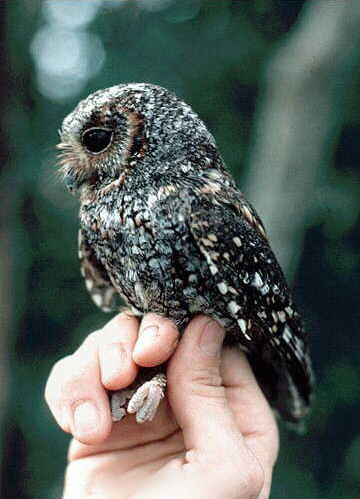 | Flammulated Owl |
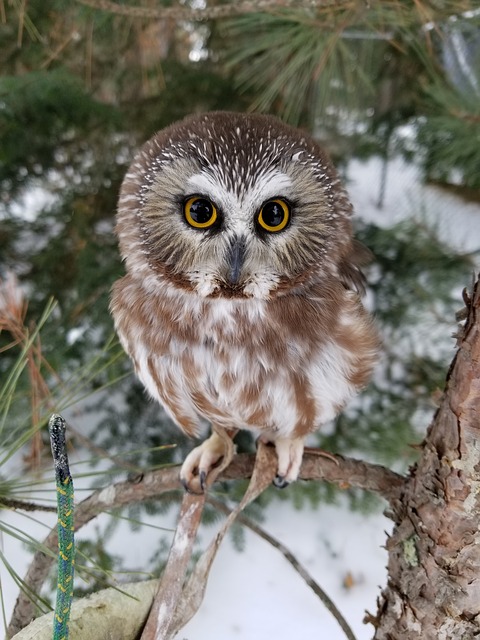 | Northern Saw-whet Owl |
Types of Owls in Utah
With a few notable exceptions, owls are big nocturnal prey birds that have large, forward-facing eyes, a pointed beak, and a loud cry.
One of their most distinguishing characteristics is that they can glide through the air undetected, thanks to their keen senses of hearing and sight.
Twelve of the twenty owl species across North America may be found within Utah. Let’s check them out!
1. Great Gray Owl

The great grey owl is the biggest species of North American owl.
They weigh a little less than a Great Horned Owl but are much bigger.
The size of these birds falls between that of a goose and a crow.
Appearance
Gray with silvery white and brown bands or lines, as the name indicates.
Their eyes are a brilliant yellow and separated by a white “X.” Both eyes are encircled with brown. The broad, roundness of their skull makes up for the absence of ear tufts.
They avoid people and cities, making them difficult to locate. They don’t make a lot of noise as they fly, and they seldom sing, so you’re more likely to spot one than to hear it.
Coniferous-forest-dwelling Great Gray Owls specialize in the hunting of rodents.
During the winter, this owl may be found in the mountains of Utah’s northwest corner, near the state’s border with Wyoming.
When winter comes, they may relocate to warmer climates, but otherwise, they tend to stay put.
2. Barn Owl

Barn owls are so named because they often take up residence in old, dilapidated barns and other rural structures.
They also use tree holes as nesting spots. As they glide through wide spaces, they keep an ear out for potential prey. Obviously, they have a keen ear for sound.
Barn owls have a very specific appearance, which allows them to be easily identified. They have huge, black eyes set in white, heart-shaped faces.
You may see some mottling of gold, grey, or cinnamon on their wings and back.
Both their chest and the undersides of their wings are white, giving them a ghostly, ghostly white appearance from below while they’re in the air.
Their ears are not tufted like those of the great horned owl.
Range
Barn owlets leave their nests far from their point of hatching to seek out their own territories, but after they do, they tend to remain there for the rest of their lives.
Barn owls are widespread across North America, including most of the contiguous United States and Mexico.
There is a decent probability of spotting an owl since they are found all across the state of Utah.
3. Great Horned Owl

The great horned owl is well-known due to its presence in popular film series such as the Harry Potter films and its distinctive hoot. Massive in size, these owls may weigh approximately 5.5 pounds on average.
They can kill dangerous prey such as falcons and ospreys because of their enormous claws and powerful flight.
When their claws are clenched, it takes 28 lbs of power to disentangle them.
Range
You may find these birds from the southern tip of Mexico to the Arctic Circle in Alaska.
There are many different types of habitats that this widespread owl calls home.
The great horned owl may be found in urban areas, suburban settings, and even in the wild.
You should be able to see one as a result of all this. Utah has it all, from the Nevada border to the Colorado border.
Find the huge bird having golden eyes and long, tufty hairs on its neck and head.
Over a cream or light grey base, they might have a barring pattern in grey or reddish.
In case you were wondering, contrary to popular belief, their heads cannot rotate a full 360 degrees.
However, they can spin their head more than 180 degrees, creating the impression that they are looking in any direction.
Since the birds’ eyes are fixed in one position, they must therefore rotate their heads back and forward between to get the same effect.
4. Northern Pygmy-Owl

Miniature owl, as the name suggests. They’re brown all around, with a few bigger white dots on their wings and back instead of a distinct pattern.
When threatened by larger predators, notably Great Horned Owls, they may use the two “eye” patches on the top of their neck to startle their prey.
Range
They are common in the Pacific Northwest and across the Rocky Mountains because of the region’s abundance of forested areas suitable for their preferred habitat, the conifer tree.
This little owl is common in the northeastern and southwestern regions of Utah, making it a great target for birdwatchers.
They don’t go far, spending their whole lives in one place.
During the winter, they will descend to warmer areas.
In the same way that numerous other owls do, they use tree holes as nesting sites. However, they are not responsible for creating the hole.
They investigate areas for preexisting animal burrows or holes caused by degradation.
The northern pygmy owl’s diet consists mostly of smaller birds, although it will also include insects, lizards, and even the occasional animal or quail.
They are mostly daytime hunters.
5. Short-Eared Owl

If you guessed that all these owls had small ear tufts, you’d be correct. Owls are able to hear prospective predators while hunting because of the tufts on the tips of their ears.
The ear tufts of the short-eared owl are small, resembling miniature horns.
Brown and white mottling with black barring make these owls easily recognizable.
The skin tone is a light cream, and the eyes are a bright yellow with heavy black eye rims.
Their unique look aids in detection; however, the fact that they’re active throughout the daytime further enhances this.
They may be easily recognized because of their characteristic flying pattern, which is similar to that of a moth.
Habitat
They are not forest dwellers like several other owl species. Their preferred habitats are grassy or open areas, where they may lie low and listen for passing prey.
They then swoop down from above to snag their prey. There are also instances of them making nests underground.
Only during the winter do these owls make their home in Utah.
6. Snowy Owl

Beautiful in appearance, snowy owls certainly stand out.
Males mature to a predominantly white appearance with vivid, cat-like yellow eyes and feathers. Females and juveniles, as well as certain adults, exhibit patches of dark brown or black.
Snowy owls are found above the Arctic Circle, where they spend long days in the summer hunting small animals like lemmings and ptarmigans.
They move south to Alaska, Canada, and the far northern areas of the US during the winter season.
Habitat
You may usually locate them lounging on the ground close to their hunting grounds. They are also known to perch on telephone or fences, utility poles, derelict buildings, and hay bales.
As they hunt on the tundra or meadows, they fly at low altitudes and examine the area below.
If food is short in their regular region, you may sometimes observe these birds across northern Utah.
As their numbers continue to fall, snowy owl sightings are becoming more uncommon.
7. Long-Eared Owl

The term “long-eared owl” refers to the unusually long tufts of hair that grow from the base of the ear.
Tumbleweeds are mostly black with some buff or orange tufts. Yellow eyes are separated by two white lines on these creatures.
They have brown spots all over their lean bodies. Nocturnal hunters, these birds nest in trees and forage in fields and forests after dark.
Their squeals, hoots, and barks are usually telltale signs of their presence. They make a lot of noise.
They can fly quite far, but only at night when they migrate. Scientists have tracked and recorded the identities of birds that made the annual journey from Canada to Mexico.
It is possible to see this bird in many parts of Utah at any time of the year.
8. Spotted Owl

Spotted owls are dark brown in color with white markings, as their name indicates.
There is more white on the breast and fewer on the rear and wings.
They feature a white “X” between their brown eyes and a distinguishing dark brown disc on their faces.
Tiny animals, such as squirrels and rats, are the prey of these nocturnal birds. The hunters sneak up on their target in silence before swooping down to snare it.
The spotted owl number is decreasing because its habitat, mature woods, is being destroyed.
Although legally protected, declining numbers are due to factors such as logging, habitat degradation, and competition with Barred Owls.
If you do happen to see one, consider yourself fortunate. There aren’t many of them.
If you want to locate one, you’ll have to venture out at midnight and hear its hooting.
The California Spotted Owl, Northern Spotted Owl, and Mexican Spotted Owl are the 3 varieties.
The Mexican Spotted Owl is common in Utah, especially in rural regions, where it may often be seen in small groups.
9. Burrowing Owl

Burrowing owls are able to sprint along the ground across deserts, grasslands, and prairies because of their lengthy legs, whereas most owls prefer to perch in trees or bushes.
They reside in tunnel systems that rodent predators like ground prairie dogs and squirrels have left.
They’ll even go after and perhaps colonize rodent burrows after catching their prey. In the absence of such, they will settle into plumbing.
Since carbon dioxide tends to accumulate underground, these creatures have evolved to be very resistant to its effects.
Identify these nocturnal birds by their tall, slender bodies and contrasting yellow eyes. Their brains are squished down into their flat skulls.
The burrowing owl breeds in Utah and then migrates south during the winter.
10. Western Screech-Owl

The Western screech owl is tiny, just slightly bigger than a robin. Their shrill scream, however, is everything but cute. Due to how completely they camouflage in with their surroundings, they are almost impossible to see in the wild.
Sit patiently outdoors at midnight and hear the screeches of owls to locate a screech owl.
Their breasts are white and their lower bodies may be any shade of brown, grey, or red.
They have black stripes all over their bodies that make them resemble the bark of various trees. Their ears are tufted in a V shape, and their eyes are a bright yellow.
Habitat
They nest at night in tree and cactus cavities, but they will also use a nestbox if you put one up in your backyard. They thrive in the suburbs and sometimes settle into city parks.
These little owls may be seen year-round in all parts of Utah.
Despite their preference for smaller prey, these birds are strong enough to carry off a full-grown rabbit.
11. Flammulated Owl

The Flammulated owl is the smallest of the owls. Comparable in size to a sparrow at most. During the day, these owls rest in the woods, but at night they seek for their food.
They hunt for insects at night and swoop down to eat them.
Habitat
Their habitat is the western United States coniferous woodlands. Only during the mating season will you be able to discover them in the short area of Utah where they reside.
They basically never leave Mexico.
Small as it is, the bird’s cry might easily fool you into thinking it is something much bigger.
Their loud, resonant hoot belies their little stature. This aids them by discouraging potential rival predators.
Try to spot the little owl with the vertical stripes on its abdomen and the tufts of feathers on its ears.
You’ll notice their dark eyes and grey back right away.
12. Northern Saw-whet Owl

These little owls are just slightly bigger than robins and have a speckled brown and white appearance.
Their face is in the form of a heart, and they possess large golden eyes with a little white V-mark in the middle of their forehead.
They hunt at nighttime, making them hard to spot, but their loud cry will alert you to their presence.
If you look closely enough during the day, you may be able to observe them in the tree holes where they spend the night. However, please do not wake the birds!
Please don’t go looking for them in the countryside or the middle of a city; they prefer the safety and security of a forest, especially a mature forest.
In order to mate, they must travel great distances. Mice and shrews are among the tiny rodents they consume.
Also on their menu are smaller birds, including juncos, chickadees, sparrows, and waxwings.
There are small, isolated mating populations in the southern United States and widespread, year-round colonies in the northern United States, the western Coastal Ranges, and the Rocky Mountains.
The rest of the nation has nonbreeding populations.
The northern saw-whet owl is a year-round resident of most of Utah, but outside of the nesting season, it is only seen in the west desert near the Great Salt Lake.
Check out this article on Types of Owls in Minnesota.
Conclusion
Owls and other prey birds find Utah to be an inviting habitat.
Most owls we know of now are threatened or endangered because their natural habitats have been destroyed.
Start backyard feeding to help rescue owls and maintain the hobby of bird watching alive.
Donations may also be sent to groups such as the Wild Utah Project and the Red Cliffs Audubon Society.
FAQ
Which kind of owl is seen most often in Utah?
These raptors may be spotted all the way from the Arctic to the tropics across North America. As far as there are trees and rocky outcrops, it can live almost everywhere.
What kind of owl produces a hoot like a hoot?
The Great Horned Owl uses a harsh, raspy hoot that stutters: h’HOOO-hooo-hooo, to call attention to its territory. Breeding pairs might engage in a vocal duet, with the male and female taking turns to make sounds, and the females are comparably higher in pitch.
Last Updated on March 22, 2023 by Lily Aldrin
